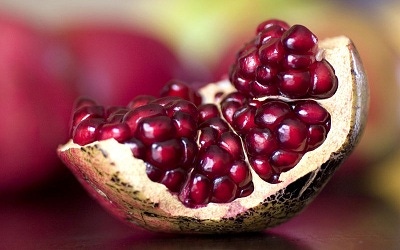
The dietary supplement industry isn't immune to buzzwords. And one segmentsuperfruitshas depended entirely on it.
Though a seedling 10 years ago, the superfruit market ripened by the late 2000s, leading to countless product launches and unheard of sales figures.
What led to the superfruit success? Industry experts agree: celebrity endorsement, mid-level marketing, explosive hype and the allure of the exotic. Claim-hungry consumers picked baobab, goji berry, pitaya, noni and mangosteen products by the bushel, flocking to little-known ingredients that promised big results.
But seasons change and so do buzzwords.
"We saw the superfruits peak happen four or five years ago," said Thomas Tritt, general manager, bioactive ingredients, Savesta LifeSciences. "I dont see the same boom and buzz it generated during its peak, but the market has stayed pretty consistent."
Now, the industry's ready to throw out the bruised fruit, leaving only value-added ingredients with clinical evidence and efficacious applications.
Composition Definitions
"Because the term 'superfruit' is not legally defined, there are no boundaries in how companies can exploit the term on foods and beverages," said Tom Payne, industry specialist, U.S. Highbush Blueberry Council.
It's true: "superfruit" isn't a regulated claim, and some companies use this to their advantage, marketing the newest ingredient from the most faraway country. But times are changing, even though the general definition of the term remains the same.
Many dietary supplement and functional foods manufacturers look toward nutritional value to determine which ingredients earn the superfruit label.
The consensus is clear; "Superfruits are usually packed with antioxidants, fiber, vitamins and minerals, and other nutrients that support health," said Paul Dijkstra, CEO, InterHealth Nutraceuticals. However, some companies, such as Savesta, take this definition one step further, maintaining a superfruit should have value-added benefits to them, not just antioxidant properties, Tritt said.
And then there's the question of origin.
"Many believe a superfruit must be exotic and rarely ever seen, but it's not true," said Steve Siegel, vice president, Ecuadorian Rainforest.
This sentimentcoupled with strong scienceis propelling fruit such as blueberries, cherries, pomegranate and coconut into the forefront of the segment.
"There are common foods available that would fall under the category," Siegel explained, offering cherries as an example. "Cherries are ubiquitous in the United States, but many only think of cherries as a sundae topping or a cocktail garnish. In truth, cherries get their color from the antioxidant anthocyanin, which may help reduce inflammation."
Increasingly, manufacturers are turning to science to ensure their ingredientsexotic or notlive up to their super standards.
Sweet Science
Many superfruits boast phytochemicals and micronutrients that offer major benefits for human health. But to further legitimize the market, companies are working to establish scientific support.
"It's not enough to just offer antioxidant activity in a test tube; it has to be bioavailable and have been the subject of published clinical trials," said Blake Ebersole, technical director, Verdure Sciences.
As a result, the past two years have procured a wealth of studies exploring superfruits and berries.
A 2012 review in Journal of Agricultural and Food Chemistry found mixed berries offered numerous neurological benefits associated with aging.1 The Tufts University researchers noted berries mediate inflammation and enhance neuroplasticity, neurotransmission and calcium buffering in both animal and human models.
Blueberries alone have proven advantageous in cognition, glucose levels and colon health, but recent research points to their heart benefits. In a 2012 Hypertension trial, high-dose pterostilbene (as pTeroPure from ChromaDex) reduced both systolic and diastolic blood pressure by more than 7 mmHg.2
Scientists from Boston University School of Medicine investigated cranberry's polyphenolic compounds and vascular health in a 2011 American Journal of Clinical Nutrition Study.3 In the chronic crossover study, 44 patients took either double-strength cranberry juice or placebo for four weeks, with a two-week rest period between beverages. The cranberry juice reduced carotid femoral pulse wave velocity, which measures arterial stiffness, by an average of 8 m/s.
As one of the more exotic superfruits, lychee's polyphenols reduced inflammation and inhibited the stress hormone cortisol in a recent study published in Nutrition Research and Practice.4 Researchers gave Oligonol® (from Maypro Industries) or placebo to healthy young men twice daily for four weeks, noting significant decrease in cortisol and inflammatory levels both at rest and after exercise.
Recently, researchers have extensively studied pomegranate punicalagins' effects on insulin, obesity and metabolic syndrome. While a 2011 Annuals of Nutrition and Metabolism study did not find pomegranate juice modified insulin secretion and sensitivity in obese patients, the treatment did stop the natural pattern of increased weight and adiposity.5 Scientists from Isfahan University of Medical Sciences, Iran, found adolescents with metabolic syndrome benefitted from drinking grape or pomegranate juice for one month.6 In the randomized controlled trial, patients taking the juice experienced a significant decrease in inflammation associated with flow-mediated dilation.
As the superfruit market matures, science-backed ingredients will prevail over rotten fruits with questionable claims.
"The supplement market, also rapidly changing and improving, abhors a vacuum," Ebersole said. "With the rapid pace of research, any ingredients that do not have a pipeline of clinical trials tend to fall by the wayside."
Sustaining Superfruits
While these ingredients' exotic origins may lure consumers, Chris DiLorenzo, president of Pocantico, warned sourcing may pose challenges for manufacturers.
"If these fruits only come from a certain region in the world, will there be enough to support a national brand?" he asked. "Some of these fruits are not really sustainable for mass production."
So, with the term "superfruit" comes another buzzword: "sustainability." And Generation Y consumersa large piece of the superfruit buyer segmentare increasingly environmentally conscious. More than one-third of Gen Yers buy as many eco-friendly products as possible, according to Natural Marketing Institute's (NMI) Lifestyles of Health and Sustainability (LOHAS) Consumer Trends Database.
Ensuring sustainable practices boils down to a careful vetting of suppliers. And with superfruits, "The primary concern is traceability on the starting raw material," said Thomas Tritt, general manager, bioactive ingredients, Savesta LifeSciences. This includes where the ingredient comes from, how it's qualified and how it's tested. "They want to know from the ground up full chain of custody transparency."
About the Author(s)
You May Also Like




.png?width=800&auto=webp&quality=80&disable=upscale)